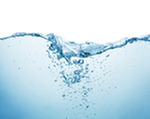Noncom Notes
For Minnesota’s Noncommunity Public Water Systems
Fall 2024
|
|
|
View this as a webpage
In This Edition:
- Welcome to Fall
- PFAS in Drinking Water
- Noncom Lead and Copper
- Success Story
- Factsheet and News Article at a Glance
- MRWA Training
- Operator Certification
- Fall Seasonal Shutdown
- Minnesota Drinking Water Action Plan
- Sanitary Survey Information
- Welcome to New Staff
- Health Equity

Welcome to Fall
The summer of 2024 has come and gone, and as always it went by too fast. This summer the Noncommunity Unit experienced several staffing additions and changes as you will see in this edition of NonCom Notes. Please be sure to welcome these new staff on board if you have the opportunity. The Noncommunity Unit has also been busy working with the new PFAS regulations, health equity, and in many other areas that impact drinking water. All of this work is important, and it would not be possible without your support and assistance. We at MDH appreciate and thank you for your cooperation with our staff, and all the hard work you do maintaining your public water system.
If you have questions about this newsletter or have suggestions for what you would like to see it address, please contact editor Leslie Winter at 651-201-4705 or leslie.winter@state.mn.us.
I hope you have a great winter and find this edition of NonCom Notes interesting and beneficial.
Miles Schacher,
Supervisor, Noncommunity Public Water Supply
|

National Primary Drinking Water Regulation
Per-and Polyfluoroalkyl Substances (PFAS) in Drinking Water
The U.S. Environmental Protection Agency (EPA) has finalized its rule establishing a National Primary Drinking Water Regulation for certain PFAS compounds. The EPA issued this rule after reviewing extensive research and science on how PFAS affects public health, while engaging with the water sector and with state regulators to ensure effective implementation. The rule sets Maximum Contaminant Levels (MCLs) in drinking water for five PFAS compounds:
- Perfluorooctanoic acid (PFOA)
- Perfluorooctane sulfonic acid (PFOS)
- Perfluorohexane sulfonic acid (PFHxS)
- Perfluorononanoic acid (PFNA)
- Hexafluoroprophylene oxide dimer acid and its ammonium salt (HFPO-DA, or GenX)
The rule also establishes a Hazard Index (HI) MCL for mixtures containing two or more of these PFAS: PFHxs, PFNA, HFPO-DA, and perfluorobutane sulfonic acid (PFBS).
The final rule also establishes health-based and non-enforceable Maximum Contaminant Level Goals (MCLG) for the regulated PFAS compounds.
The chart below shows the MCLGs and MCLs for each of the regulated PFAS under the final rule:
Maximum Contaminant Levels and Goals Summary
|
Contaminant
|
MCLG [ng/L]
|
MCL [ng/L]
|
|
PFOA
|
0
|
4.0
|
|
PFOS
|
0
|
4.0
|
|
PFHxS
|
10
|
10
|
|
HFPO-DA
|
10
|
10
|
|
PFNA
|
10
|
10
|
|
Hazard Index*
|
1 [unitless]
|
1 [unitless]
|
*Mixture of HFPO-DA, PFHxS, PFNA, & PFBS. For an explanation of the HI calculation please see https://www.epa.gov/system/files/documents/2024-04/pfas-npdwr_fact-sheet_hazard-index_4.8.24.pdf
Applicability
The rule applies to public water systems classified as Nontransient Noncommunity Water Systems, such as schools, child care centers, offices, and factories. Transient Noncommunity Water Systems, such as gas stations, hotels, or resorts, are not subject to the requirements of the rule.
Monitoring
Public water systems must complete initial monitoring for these PFAS by April 2027, followed by ongoing compliance monitoring. MDH will begin conducting the required monitoring for the new rule beginning in January 2025. If monitoring shows that drinking water levels exceed the MCLs, public water systems have until 2029 to implement solutions that reduce the levels of PFAS to comply with the regulatory requirements.
Treatment Options
EPA does not determine how water systems remove PFAS to below regulatory limits. Public water systems can choose from multiple proven treatment options. In some cases, systems can remove contaminated wells from service or obtain new sources of drinking water.
More Information
|

Noncom Lead and Copper Progress
Service Line Inventories to Comply with the Lead and Copper Rule Revisions
Over the past year and a half many people have worked hard to inventory all the service line materials in Minnesota supplying water to Nontransient Noncommunity (NTNC) Public Water Systems (PWS).
Special recognition goes to:
- Field sanitarians (MDH) and PWS representatives who performed visual inspections and collected initial data.
- John Galt (MDH) who confirmed unknown, galvanized pipes requiring replacement, and lead service lines, as well as assisting with the inventories at complex systems.
- Rochelle Steinbruckner (MDH) who tracked, reviewed/determined completeness of the inventories, generated/sent Accessibility and Public Notice letters, entered data into the Minnesota Drinking Water Information System, and worked with the systems to complete posting requirements and return certifications.
- Mark Kluhsman (MDH) who assisted in sending Accessibility and Public Notice letters and performed all the printing/scanning into the MDH electronic storage application.
- PWS representatives who performed the Accessibility Posting and returned the certifications.
- Jennifer Koenig (Minnesota Rural Water Association) who assisted in working with the systems to complete posting requirements and return certifications.
100% of the NTNC PWSs have completed their Service Line Inventories. All service line materials have been identified as non-lead, consisting of 1526 service lines at 464 systems. To date, 95% of the systems have returned their certifications. The remaining 21 systems have until Oct.16, 2024, to return their certifications before violations will be issued. Modified or newly installed service lines at existing NTNCs, or new service lines installed at new NTNCs, will be identified during plan review or during on-site visits.
This was a large undertaking and all those involved should be proud of the work they accomplished.
_______________________________________________________________________
A Success Story on Nitrate: Becker Schools
Becker Public Schools Transportation Facility is a transient public water system located in Becker, Minnesota. They are a smaller system, serving an average of 60 people per day.
Water samples collected in October of 2023 showed nitrate levels of 18 milligrams per liter (mg/L), which is greater than the US EPA maximum contaminant level of 10 mg/L. This occurrence placed the system in violation of the Nitrate Rule.
Becker Public Schools Transportation Facility applied for a Source Water Protection Transient Grant to help cover costs of installing a nitrate treatment system. Given the location of the system, the grant program noted the Public Water System was in an area operating at or below the Median Household Income and took this into consideration when scoring the potential grant awardees. Becker Public Schools Transportation Facility was awarded grant funding, allowing them to successfully install an approved nitrate treatment system. Subsequent testing in 2024 indicated that the nitrate levels were well below the Maximum Contaminant Level, at <0.05 mg/L.
________________________________________________________________________
|
|
|
Factsheet and News Article at a Glance
MRWA Training/Resources
The dates and locations for upcoming in person training sessions are listed below. Dates are also posted on the Training Calendar page. At the top of that page, click on the box “Go To Small Systems Training” for Class E & D training dates and locations. For in-person training sessions, notices will be mailed to operations specialists in those areas approximately one month prior to the class. Training dates for January – June 2025 are being arranged. As soon as these dates are scheduled, they will be posted on the website.
In-Person Training:
Class E Training Workshops (8 a.m. – noon)
- Oct. 1, 2024: Cloquet Forestry Center, 175 University Road, Cloquet, MN
- Nov. 20, 2024: Scandia City Hall, 14727 – 209th Street North, Scandia, MN
Online Training:
- December 2024 – Date and topic will be scheduled in November.
To register for any of these training sessions, please call 1-800-367-6792 or visit our website www.mrwa.com and click on the training calendar link.
________________________________________________________________________
Operator Certification
Nontransient noncommunity public water supply systems must employ a certified water operator. These systems include schools, daycare facilities, factories, and businesses. Water operators who have questions about their certification status or need to take a water operator exam should reach out to Noel Hansen at 651-201-4690 or noel.hansen@state.mn.us.
Water Operator Certification and Training also provides further information.
Fall Seasonal Shutdown
Is Your Water System Ready for Winter?
Proper maintenance increases the longevity of a water system and reduces water quality problems that can lead to dissatisfied customers and regulatory issues. Fall is a good time for maintenance whether you are a seasonal or year-round system.
Seasonal Water System Shutdown Guidance
Completing shutdown procedures for seasonal water systems, or those systems that depressurize portions of the distribution, will help you reduce contamination risk and minimize the risk of potential issues that could delay start-up next season. Shutdown is an opportune time for a thorough examination of the system’s physical components. Repairs can be accomplished more easily during shutdown without being an imposition on your customers. Recommended steps can be found by referring to Seasonal Water System Shutdown Guidance (PDF). Contact your sanitarian or engineer if you have questions about seasonal shutdown procedures.
Before the Freeze, Winterize!
For those hearty souls who operate year-round, the fall season can still be a good time for the system inspection and applicable protection and maintenance described in the shutdown guidance (including fixing leaks, cleaning, and disinfecting non-pressurized storage tanks, flushing sediment from water heaters, and ensuring wellhead protection is in place for the winter). Here are some additional tips for winterizing your system, adapted from The Well Owners Network Winter 2022 newsletter.
For inside a building:
- When in doubt drip your faucets. Leave faucets dripping slightly overnight in extremely cold weather. This slight trickle allows constant movement of the water which will prevent freezing. Remember more water is wasted from a frozen pipe that burst than from using this tip! You can still save the water you are dripping; just place a bucket or large pot under the faucet. You can use that water to flush the toilet in a power outage or water plants. CAUTION: If your septic line draining to the tank is prone to freezing, this dripping water must be captured and not allowed to drain.
- Mark and remember where your main shut-off valve is. Knowing where this valve is during a water pipe burst can prevent flooding or water damage. Valves should be exercised (open and closed) periodically to ensure they can function in the case of an emergency.
For outside:
A few tips from MDH:
- Know your distribution system. Map, label, and document it. Become familiar with where all the shut-off valves are. Adding additional valves to different lines of a distribution system can aid in maintaining pressure should leaks occur.
- Consider electronic freeze and leak protection sensors. There are a variety of small sensors available to monitor temperature or detect water leaks that are designed to connect with your smartphone, tablet, or computer. Early warning for any problems with your system can prevent pipe bursts or flooding. Sensors can be useful in pumphouses, kitchens, and basements, and may be set up to automatically shut off your main supply when a leak is detected.
- Ensure wellhead protection is in place for the winter. Place posts around the well to protect the wellhead from snowplows and vehicles when covered with snow. Consider adding a fiberglass driveway marker to help with locating the well.
- If heat tape is needed for water lines, be sure all electrical and plumbing codes are followed.
- Be careful if heating a well house. Make sure all electrical codes are followed.
- Drain outdoor taps and blow out lines as needed. Many backflow preventers are not to be removed. Lines with non-removeable backflow preventers must be blown out using an oil-less air compressor.

Minnesota Drinking Water Action Plan
Provide Input on Minnesota's Roadmap to Ensure Safe and Sufficient Drinking Water into the Future
Minnesota has an outstanding record of providing safe drinking water for customers on public water systems. Yet, there are risks and gaps to address so that everyone, everywhere in Minnesota has safe and sufficient drinking water. The DRAFT Minnesota Drinking Water Action Plan names key risks and gaps and proposes strategies to address them. Risks and gaps include limited protections for private well users, a shrinking drinking water workforce, as well as emerging risks from contaminants, pathogens, and climate change. The Minnesota Department of Health (MDH) coordinated the development of the Plan, incorporating expertise and feedback from water professionals, state and local governments, researchers, and Minnesotans who drink water.
MDH invites you to review the Plan and provide feedback by Oct. 17. The Plan, information sheet, and feedback form are at Future of Drinking Water. Please share this invitation with others.
________________________________________________________________________
Sanitary Survey Information
The Sanitary Survey Information webpage is live! This resource may help as you prepare, conduct, and complete a sanitary survey. You may find valuable information on Sanitary Survey Information for Public Water Systems
It is also linked on the Noncommunity Public Water Supply and the Community Public Water Supply webpages.
|

Welcome to New Staff
The Noncommunity Unit welcomed Josh Zellmann to the Bemidji Office. He graduated from the University of North Dakota with a Bachelor of Science degree in biology and a wildlife and fisheries background. His prior work experience includes sampling Steelhead smelt for the Idaho Fish and Game, waterfowl research in Klamath Falls, Oregon, and most recently property maintenance for Target. His field territory is Beltrami and Koochiching counties.
***************************************************************************
We are excited to welcome Kilen Klimek to the Unit. Kilen will be working as a noncommunity drinking water sanitarian out of the Duluth District Office. His territory includes the northern portions of Lake and St. Louis counties. Previously, Kilen was a student worker with the MDH beach monitoring program.
*****************************************************************************
Maya Grantier recently started as a Noncommunity Compliance Officer for the northern half of Minnesota. Maya is originally from Bemidji and has a degree in geology from Macalester College. She worked at an earth science lab at the University of Minnesota for several years before going back to school at the U of M for a Master of Public Health in Environmental Health.
******************************************************************************
The new St. Cloud District Noncommunity Sanitarian is Tyler Schacher. His territory includes Todd and the southern half of Cass County. Previously, Tyler worked for MDH as a lead risk assessor, as well as a student worker at the Minnesota Pollution Control Agency doing river flow monitoring. Tyler has a Bachelor of Science degree from Bemidji State University in Environmental Studies and a Master of Public Health from North Dakota State University.
******************************************************************************
Dane Huber is the new South Regional Sanitarian Supervisor in the NPWS Unit. He brings to the role a mix of public health experience, having spent time working in the Public Health Lab, in the field as a NPWS Sanitarian and a Minneapolis Health Inspector, and as the NPWS Compliance Coordinator.
|
|
|
Health Equity Spotlight
We are excited to share our latest initiatives and achievements aimed at ensuring access to clean drinking water for all, which is essential for optimal health.
The Noncommunity Unit has been actively addressing access disparities and regulatory compliance challenges while providing ongoing technical support to operators by engaging the operators early in their planning processes. They focus on proactive infrastructure investment, ensuring operators are aware of maintenance and grant opportunities. They ensure regulatory compliance through monitoring and support, helping maintain low violation rates among nearly 6,000 noncommunity systems. Furthermore, they are working to enhance cultural competence by translating public notices and addressing environmental factors that contribute to water safety. The unit is also enhancing emergency preparedness, offering support to communities during crises like flooding and power outages. Their efforts include:
- Promoting infrastructure investment: “Our staff work with operators to provide ongoing technical support for their water systems and connect them to resources so they can work to be proactive rather than reactive when it comes to infrastructure.” “Our field staff also actively promote the Source Water Protection grants may be available for Noncommunity Systems that assist in addressing their infrastructure needs.”
- Providing technical support: Noncommunity staff work to engage operators through our site visits, mailings, and our newsletter, Noncom Notes.
- Enhancing cultural competence by translating public notices in other languages and ensuring they are utilized in locations informing consumers from other cultural backgrounds.
- Focusing on emergency preparedness to ensure that noncommunity systems can effectively respond to crises, thereby supporting broader community recovery efforts.
|
|
|
|